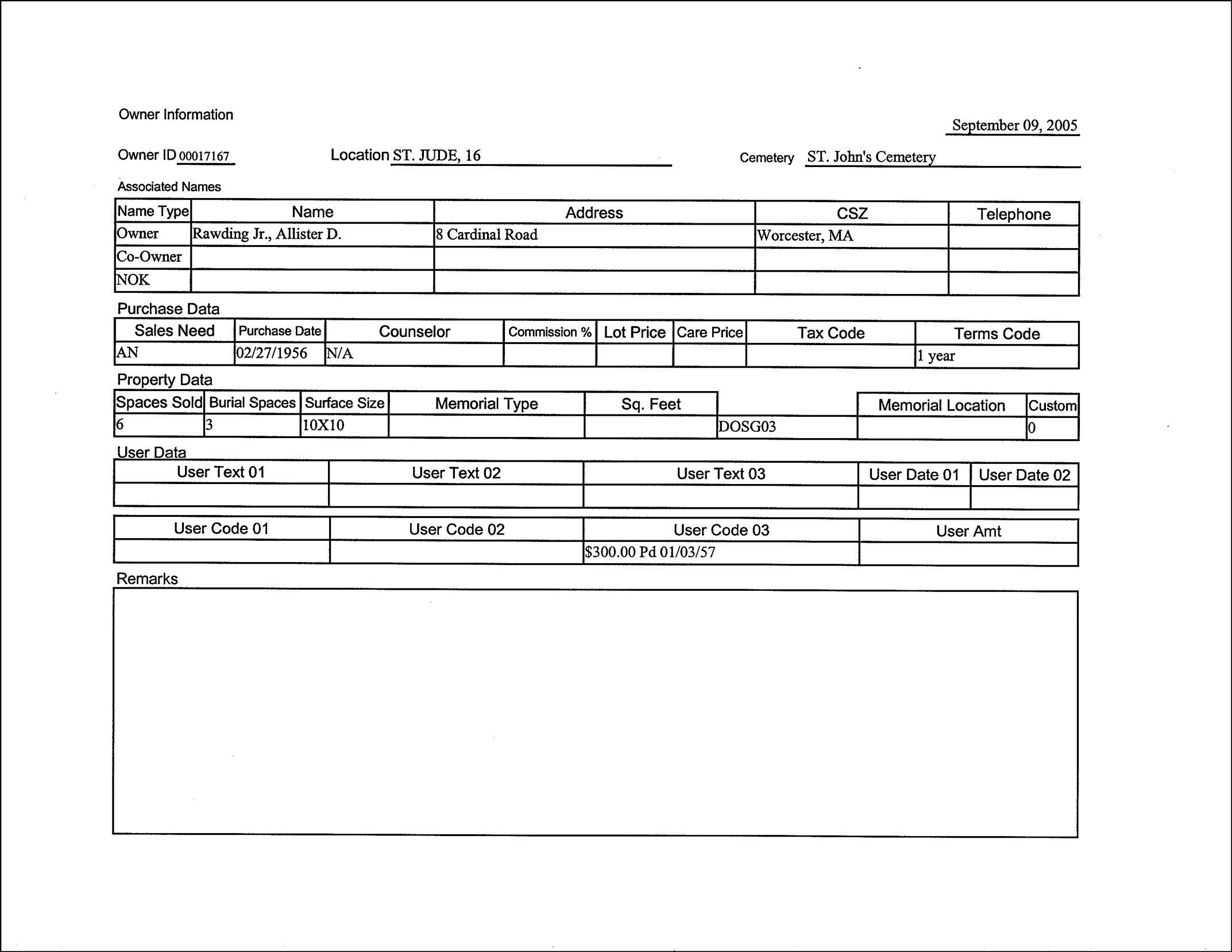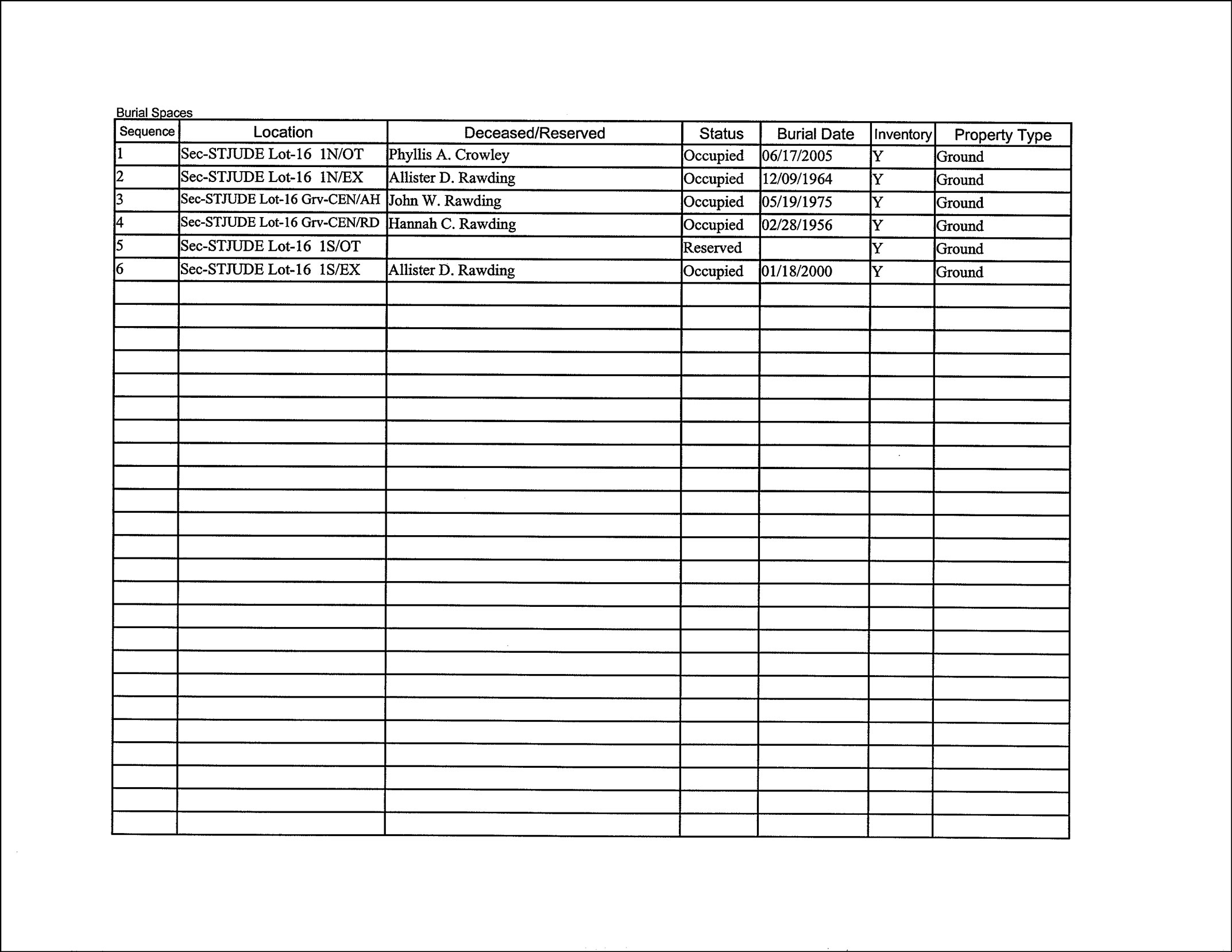When I visited the grave of Allister Daniel Rawding and Family in 2005, I obtained a copy of the cemetery record for the lot. The employees at St. John’s Cemetery in Worcester, Massachusetts were very gracious and provided me with all the help I needed to find the gravesite.
The Cemetery Record of Allister Daniel Rawding and Family – Page 1
The Cemetery Record of Allister Daniel Rawding and Family – Page 2
SOURCE: The Cemetery Record of Allister Daniel Rawding and Family. St. John’s Cemetery, Worcester, Worcester County, Massachusetts. Record printed on 09 Sep 2005.
The cemetery record shows that:
Phyllis A. Crowley was buried on 17 Jun 2005 in Lot 16 1N/OT
Allister D. Rawding was buried on 09 Dec 1964 in Lot 16 1N/EX
John W. Rawding was buried on 19 May 1975 in Lot 16 Grv-CEN/AH
Hannah C. Rawding was buried on 28 Feb 1956 in Lot 16 Grv-CEN/RD
Lot 16 1S/OT is reserved
Allister D. Rawding was buried on 18 Jan 2000 in Lot 16 1S/EXAll plots are in the St. Jude section of St. John’s Cemetery.
Phyllis A. Crowley, John W. Rawding, and Allister D. Rawding (in Lot 16 1S/EX) are three of the children of Allister D. Rawding (in Lot 16 1N/EX) and Hannah C. Rawding.
Click on the link for a PDF copy of the Cemetery Record of Allister Daniel Rawding and Family.
The record indicates that the lots were purchased by Allister D. Rawding Jr., residing at 8 Cardinal Road, Worcester, MA. He purchased the property on 27 Feb 1956, apparently on the occasion of the death of his mother, Hannah C. Rawding, who was buried on the next day. He paid $300 on 03 Jan 1957. The property included 6 spaces and 3 burial spaces in a 10 x 10 area, suggesting that the burials were made two deep.
When recording the source of cemetery records, it is important to record the date on which the record was printed. The record itself will not always include that information, and so the researcher may need to add that information by hand.
Burial information may change with time if additional burials take place in the same lot or if a casket is removed and reinterred elsewhere . The date the record was printed helps the researcher to know the state of the grave at a given point in time.
Realizing that the state of a grave may change with time, the researcher may find it necessary to obtain a new copy of the cemetery record at a later date.
Copyright © 2008 by Stephen J. Danko





